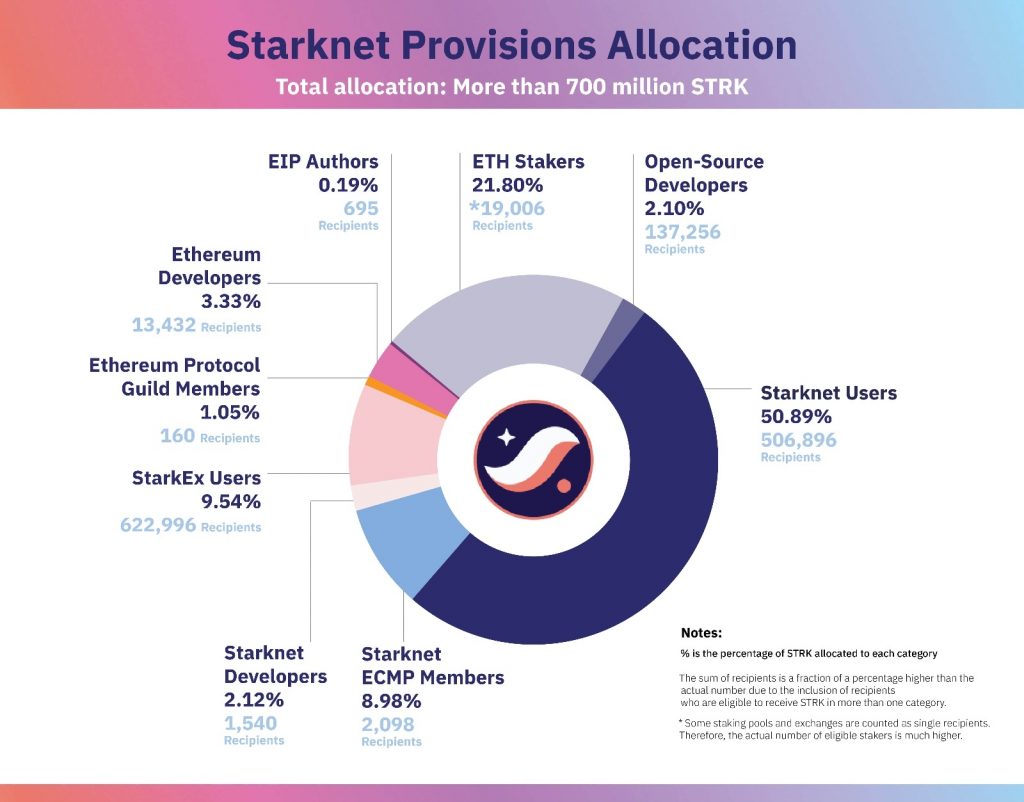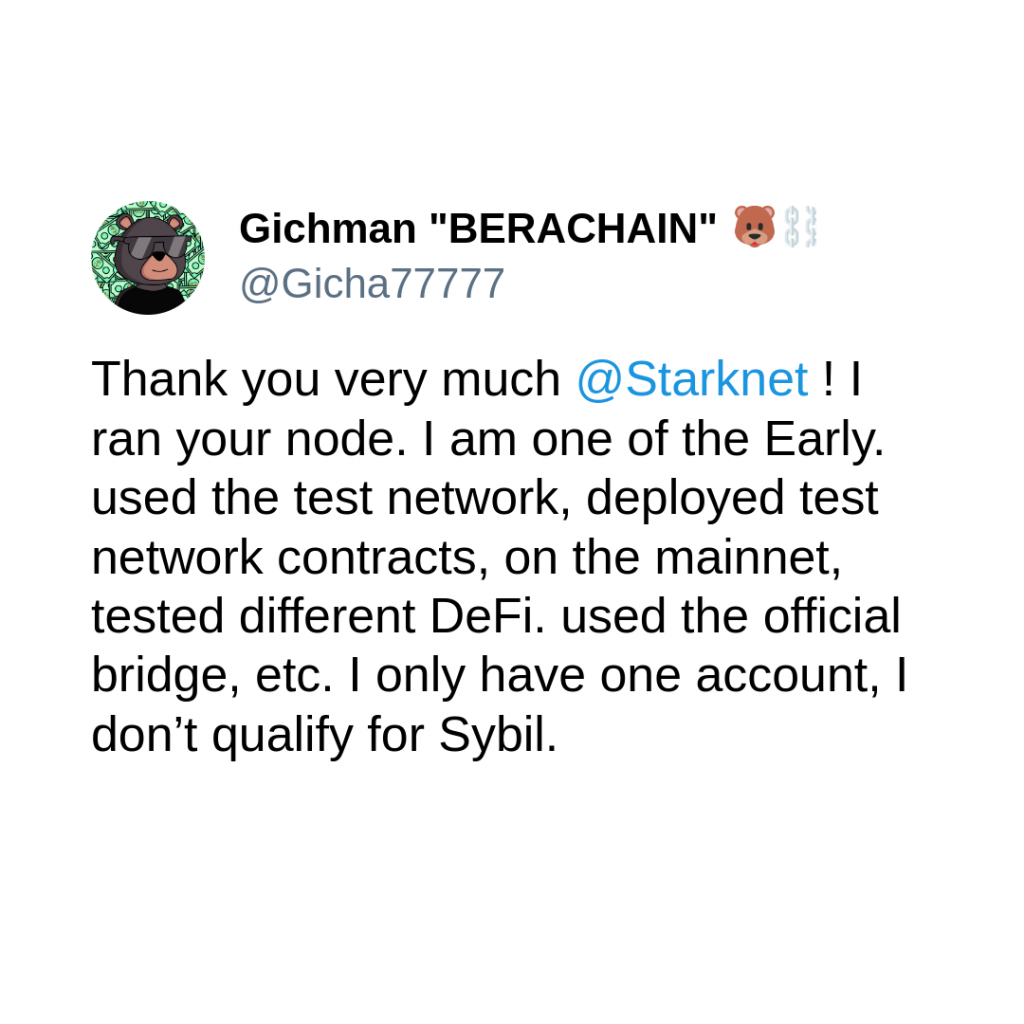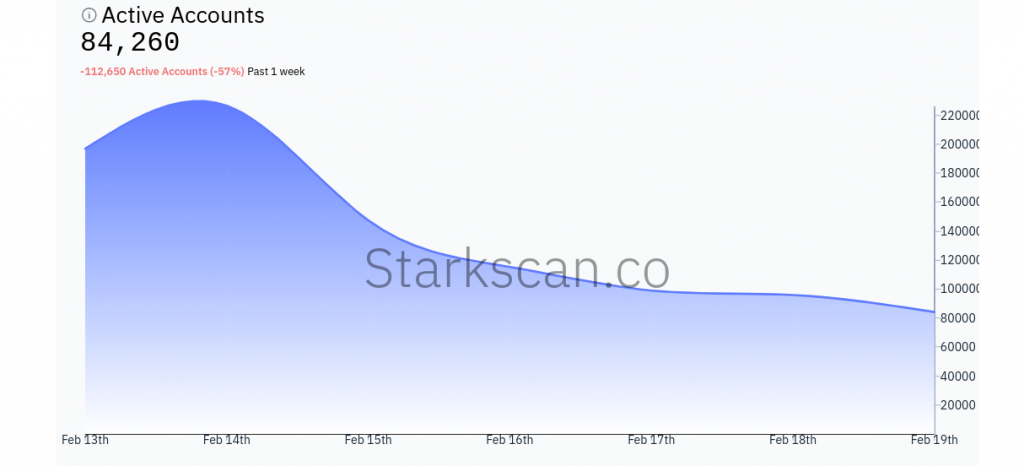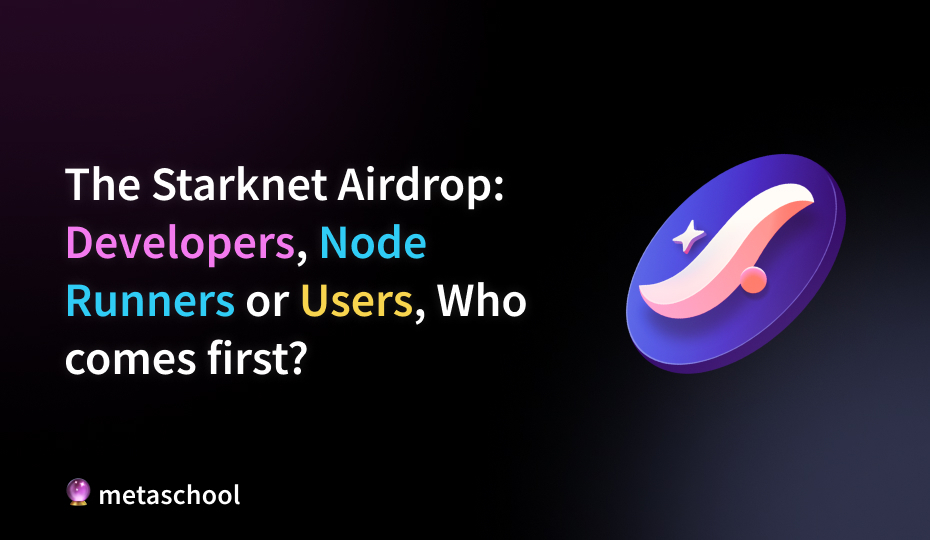Table of Contents
A Brain Teaser
As a child, if I was asked to state the most scientifically challenging conundrum known to mankind, I would simply point to the age-old question of what came first, the chicken or the egg. I mean a chicken is hatched from an egg but an egg needs to be laid by a chicken.
One used to lose sleep over this never-ending cycle.

Though deemed as a fun little brain teaser, the chicken or the egg problem actually touches upon a topic that dictates everything from ecological cycles, economic systems, climate patterns, etc. Cyclical causality, as it is called, refers to a situation where two or more events or processes depend on each other, creating a loop of cause and effect.
Now, years down the line, as I try to navigate the Web3 space, the classic debate pops up again, but this time, in a more “blockchainified” manner and it all started with the Starknet airdrop.
🔥 Check this out – Create Your First ERC-20 Token in Cairo on Starknet
A stark turn of events
Starknet is an Ethereum layer-2 solution that uses zero-knowledge rollups, specifically Validity Rollups, to scale dApps efficiently. It allows for massive scaling of computational tasks without sacrificing security or composability.
Starknet achieves this by leveraging the STARK proof system for secure, low-cost transactions and high performance. Its contracts and operating system (Starknet OS) are written in Cairo, a specialized programming language designed for Starknet. This makes Starknet a powerful tool for developers seeking to build scalable dApps on Ethereum.

On December 8, 2023, the Starknet Foundation, which is responsible for overseeing the development of the Starknet platform, announced that it will be conducting an airdrop of 1.8 billion STRK tokens. The primary objective of the airdrop was to drive community engagement and DeFi activities on the Starknet platform.

In their announcement, they highlighted the following distribution plan for the 1.8 billion tokens:
- 900 million STRK tokens are set aside for community rewards. These rewards aim to encourage the Starknet community to take part in various platform activities.
- Another 900 million STRK tokens are allocated for user rebates. These rebates allow users to save on transaction fees, making using Starknet more affordable.
- 50 million STRK tokens are dedicated to attracting DeFi (decentralized finance) users. This strategy is designed to draw enthusiasts of decentralized finance to Starknet.
Two months later, on the 14th of February, the Starknet Foundation announced the distribution of STRK tokens to about 1.3 million wallet holders. The airdrop, dubbed as the Starknet provision program, is scheduled for February 20, 2024.
This initiative, which involves over 728 million tokens, is quite unique for its inclusivity, targeting a wide array of participants beyond the Starknet ecosystem. The giveaway is supposedly designed to encourage broader engagement and participation, allowing recipients until June 20, 2024, to claim their tokens. The foundation’s CEO, Diego Olivia, praised the community’s role in preparing Starknet, and by extension, Ethereum for wider adoption, stating the giveaway as a celebration of these collective efforts.
And so, the Starknet community brimmed with joy and anticipation, eagerly awaiting the promising times ahead. The End.

Just kidding!
A provisional problem
As with countless other airdrops, to ensure a fair distribution of the tokens, the Starknet Foundation introduced certain criteria for the members to claim eligibility for the airdrop.

For users, the criteria included things like a minimum of five transactions before a specified cutoff date, an activity span of at least three months, transaction volumes exceeding a threshold amount, etc and for developers, it included contributions to Starknet’s GitHub repository before a certain date, with additional criteria ensuring contributions are both substantial and meaningful.
Apart from the Developers and users of the ecosystem, Starknet extended the provision program to include Ethereum developers, contributors and stakers, as a way to appreciate the wider community’s efforts in maintaining the Ethereum ecosystem, which is essentially the bedrock of Starknet.
As the official allocations were announced, the hype around the airdrop turned to dismay for many, as they found themselves receiving little to no rewards, and like any other crypto enthusiasts deprived of airdrops, they took to social media platforms to register their disappointment. The crowd included everyone from contributors to node operators.

Many people were also upset regarding the 1.3 billion STRK tokens that were going to be unlocked for the Starkware team and investors on April 15, right after the tokens started trading. They worried this might reduce the value of tokens for everyone else and made them question if the team was really committed to the project’s future.
Eli Ben-Sasson, one of StarkWare’s founders and CEO of Starkware, said the team was dedicated to developing Starknet and wanted it to be an important part of the overall ecosystem.
To control all this chatter, Starknet released the following tweet, acknowledging the critiques and proposing possible resolutions.

One of the direct casualties of all the drama surrounding the Airdrop was the Starknet Network activity, which seems to have plummeted since the airdrop announcement.

The return of the chicken
The entire scenario surrounding the Starknet airdrop essentially points to the power or sway that a community holds over a Web3 platform/project. As you dissect the finer details of the situation, you can see that many from the Starknet community were quite happy with the allocations that they received.
And yet, when you see such a drastic decline in the network activity, one wonders, who comes first in the community? The users, the developer or the node operators?
Now, this debate does have some parallels with the whole chicken and egg question, but they address two different aspects of a situation. With the chicken, we are trying to decide upon the origins or the first cause but with the Web3 community debate, it’s about understanding the dynamics and hierarchy within the ecosystem.
The node-user-code Dynamics
When you look at a web3 ecosystem, three essential roles underpin its structure: Developers, Node operators and Users. Each of these roles contributes significantly to propelling the ecosystem forward, creating a continuous cycle of innovation, maintenance, and engagement.
- Developers initiate this cycle by creating decentralized applications (dApps) and smart contracts that define the rules of interaction within the blockchain. Their innovation and technical skills lay the groundwork for new services and opportunities in the digital and financial spaces.
- Node Operators play a critical role in sustaining the ecosystem’s integrity and functionality. By running the software that validates transactions and blocks, they ensure the blockchain’s transparency, security, and decentralization. This role is pivotal because, without node operators, the blockchain would neither be trustless nor operational.
- Users close the loop by engaging with the ecosystem. Their participation, whether through transactions, governance, or other forms of interaction, drives the demand for Web3 services. This, in turn, incentivizes developers to innovate and node operators to maintain the system’s robustness.
And it is this cycle that fuels a project’s growth and sustainability. So, if you were to pick and rank these roles in terms of importance, things can get complicated as each role plays into the other. So how do we decide the hierarchy?
The truth is, trying to rank developers, node operators, and users in terms of importance is like trying to decide which part of a bicycle is most important. Is it the wheels, the chain, or the frame? Without any one of these, the bike simply wouldn’t work. Similarly, in the Web3 ecosystem, each role is crucial and interdependent; they’re parts of a well-oiled machine that needs all components working in harmony to move forward.
The Interdependence Formula
Instead of viewing the Web3 ecosystem through a hierarchical lens, it’s more productive to see it as a dynamic, interconnected network. Each role feeds into and supports the others in a continuous loop of feedback and growth.
With this in mind, let’s refine our perspective on how these roles intermingle, introducing a formula that captures the essence of their interdependence:
Web3 Project Growth = Developers’ Innovation × Node Operators’ Reliability × Users’ Engagement
This formula highlights that the success of any Web3 project is not just additive but multiplicative – the absence or weakness in any one component drastically affects the outcome. Let’s break down this formula:
- Developers’ Innovation (DI): The creativity and technical prowess of developers in building secure, user-friendly, and valuable dApps and smart contracts. Innovation here isn’t just about new ideas but also about improving existing systems and making them more accessible and efficient.
- Node Operators’ Reliability (NOR): The steadfastness and efficiency of node operators in running the network. Their reliability ensures transactions are validated, blocks are added seamlessly, and the entire system remains up and running without hiccups.
- Users’ Engagement (UE): The activity and participation level of users within the ecosystem. Engagement can range from simple transactions to governance voting, community involvement, and evangelizing the platform to new users.
The Multiplicative Power of Interdependence
The beauty of this formula lies in its simplicity and depth. It suggests that if any one of these factors were to drop to zero, the entire system’s success would plummet. Conversely, improvements in any one area amplify the system’s overall strength and potential for success exponentially, not just linearly.
For example, a significant innovation by developers (DI) combined with high reliability from node operators (NOR) will only achieve its full potential if matched by strong user engagement (UE). Each component magnifies the others’ impact, creating a robust, vibrant ecosystem.
How to Keep the wheel spinning
To maximize the potential of the Web3 ecosystem, stakeholders must focus on:
- Encourage Collaboration: Foster environments where developers, node operators, and users can communicate, share feedback, and collaborate. This could be through forums, community calls, or co-creation platforms.
- Recognize Contributions: Acknowledge and reward the contributions of each group. This can be through token incentives, acknowledgement in community updates, or opportunities for increased participation in governance for all three groups.
- Educate and Empower: Provide resources and opportunities for learning and growth. Whether it’s coding tutorials for aspiring developers, guides for setting up nodes, or educational content to help users navigate the ecosystem more effectively, education empowers participation.
In the end, the strength of a Web3 project lies not in the individual importance of developers, node operators, or users but in their combined efforts and mutual support. It’s this interdependence formula that ensures the ecosystem is more than just a sum of its parts; it’s a thriving community of innovation, security, and engagement.
Follow us on –
🔮 Twitter – https://twitter.com/0xmetaschool
🔗 LinkedIn – https://www.linkedin.com/company/0xmetaschool/
